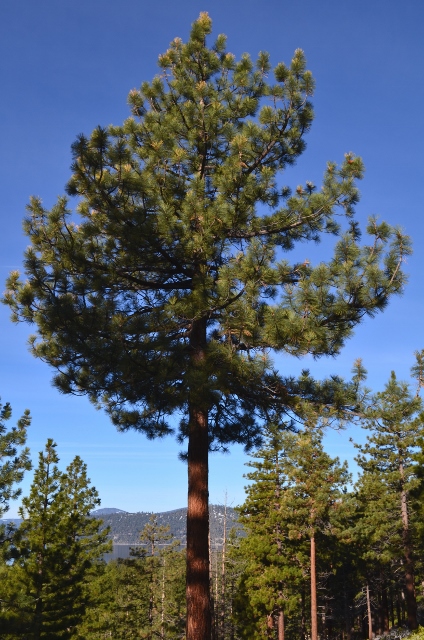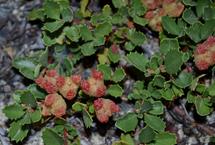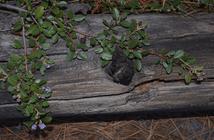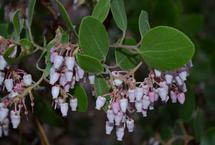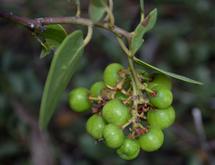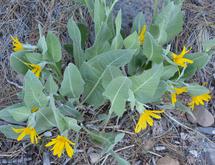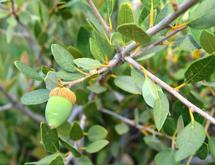saveourplanetearth.com
Call us: (775) 831-1331
Spring Growth
Aside from that last (perhaps) little blast of winter, nature’s activities are springing forth with zest. It is well worth a stroll in the woods, paying attention to the new shoots that are pushing their way from the ground and popping out of the branches on the trees.
Even pine trees have an awakening in the spring. Pine trees don’t lose their leaves (needles) during cold weather and limited daylight, but they do slow down. Roots continue to slowly grow and the tree takes in water and nutrients.
When the weather begins to warm, the sap begins to flow again in the trunk. Try hugging a Jeffrey, and breathe in its delicious butterscotch scent.
The pine cone making, seed producing process takes three years. Jeffrey pine nuts are prized by Steller’s jays, Clark’s nutcrackers and rodents. Some seeds survive being eaten and may sprout as future Jeffrey’s, often aided by rodents or birds that cache them for later consumption, some of which are never retrieved.
Beneath the pine tree, search for mahala mat, also known as squaw carpet—a woody shrub whose branches grow along the ground. It is in bloom right now, rich with small lavender flowers consisting of five spoon-shaped petals. The plant will produce three-chambered fruits, each chamber holding tiny, dark seeds, which harden and spill out in late fall.
This plant covers the ground and its roots affix the soil, helping to prevent erosion. Mahala mat also fixes nitrogen into the soil, thereby fertilizing neighboring plants, including the Jeffrey pine, which it grows beneath.
Its leaves can be used to make tea and the blossoms are a naturally occurring soap. The tiny blossoms are visited by native bees and the seeds produced in the fall help nourish birds before they begin their long migration, as well as provide food for mice and moles.
A shrub that is probably under-appreciated simply because it is so abundant in this area is the manzanita. This evergreen shrub is in full bloom right now, awash with delicate, bell-like pink blossoms.
Manzanita is the common name for most species of the genus Arctostaphylos. There are close to 110 species of manzanita–the variety of manzanita found in the Great Basin and much of the Sierra Nevada is the Arctostaphylos patula, or greenleaf manzanita.
Manzanita blooms from late winter to early spring, then turns its energy to producing berries for the summer. The fruits look like little green apples, ripening to reddish brown.
The manzanita blossom provides food for butterflies, bees and other insects; then, as it produces its fruit, food for birds, deer and bears.
The hard wood of the manzanita was used by the early settlers and Indians to make utensils and pipes, even used as toothbrushes.
The leaves were steeped as tea for stomach relief or as a bath for rheumatism, leaves were mashed or chewed to use as a poultice on sores and the berries steeped to make a drink resembling cider. The berries can be used to make a potion to treat the rash caused from poison oak.
A cheerful flower than can be found right now dotting the hillsides is the daisy-like flower in the aster family, mountain mule ears.
This plant stems from a long taproot and grows from one to two feet tall, usually appearing in large colonies. The leaves are large, soft and furry. In the fall, the flower heads produce edible seeds, similar to sunflower seeds.
The roots can be used as a medicine for sores, burns and rheumatism. Native Americans prepared the roots by drying them over hot ashes and applying the roots as a poultice or the roots can be dried, ground, mixed with water and applied as a salve.
An unobtrusive evergreen shrub, mingling with the manzanita, is the huckleberry oak. This shrub grows well on steep slopes, and is beneficial to holding soil in place and preventing erosion. It also grows along ridges and in high mountain forests. It reaches three to five feet tall and spreads horizontally.
This shrub is native to California but also grows in Nevada and Oregon. It provides food for deer, which eat the leaves. Later in the fall this shrub produces bitter acorns, eaten by bears and birds.
These are but a few of the plants making some interesting growth spurts right now, between snow bursts. Whatever the weather, make it a point to get outside and observe Mother Nature at her finest.
The Jeffrey pine can grow from 80 to 160 feet with trunk diameters reaching 4 to 6 feet and live for 400 to 500 years
Mahala mat grows close to the ground, often under pine trees
Mahala mat fruit, later in the season
Manzanita flower
Manzanita means "little apple" in Spanish
Mountain mule ears
Huckleberry oak produces acorns in the fall



